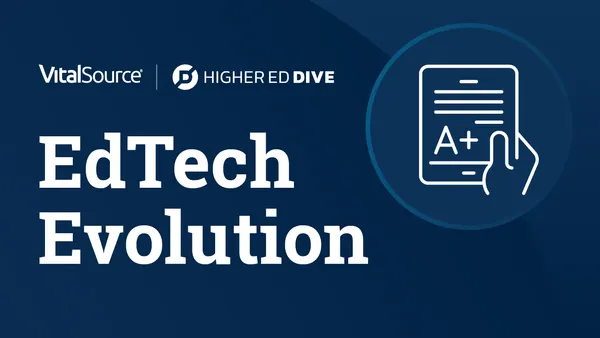Prior to the last recession in 2007, four out of five jobs lost were considered “low skills” - requiring a high school degree or less, but the employment landscape is dramatically changing. (Source) By 2020, it’s estimated that 65% of jobs will require a postsecondary degree. More people than ever before will require some form of postsecondary education to be considered qualified for a job. However, many (if not most) institutions, with their current capacity, will fall short of being able to offer the right kind of programs to the numbers of people who are turning to them for the credentials that will make them employable. Even if institutions could offer the right programs at the needed numbers, many students, particularly adult learners and those already in the workforce, require more flexibility than brick-and-mortar programs can offer. Can higher education do better? Not alone.
To solve the problem of demand and access, we must take a hard look at the current state of higher education, and be willing to accept solutions that drive rapid and sustained growth, and frankly, to accept solutions that work. The Online Program Management (OPM) model, in which a third-party provider partners closely with institutions to develop, build, maintain and grow online programs, holds great promise for solving the access problem, and offers much relief for already-stretched institutions. This model has been serving higher education for well over a decade.
With greater numbers of students turning to online programs to secure their own employability, the bundled services offered by third-party providers help institutions with everything from enrollment management, marketing, and retention to instructional design and faculty support, freeing up valuable internal resources to focus on the academic mission. This model is neither reckless nor exploitative, as some have suggested; it is an absolute necessity for growth and competitiveness. Many forward-thinking institutions understand that in order to stay competitive while offering students their brand of education, they must engage in a partnership that can give them valuable insights into the running of a successful online program. One in which there are shared goals and risks, shared successes, and shared accountability. In such a model, the bar is raised and the hard work of all parties is rewarded, with OPM providers earning a share of revenue only if students are successful.
Then, there’s the question of speed and scale. In truth, many institutions simply don’t have the capital investment capabilities to build and launch an online program quickly, nor the real-time insights to make that program match up with the needs of local or regional labor markets. When the average institution doesn’t realize any return on its online learning program investment until year three, external partners can help to mitigate challenges around both cost, and the risk involved in setting up online programs and bringing them to market quickly.
Some claim that emerging models involving third parties benefit profiteers and harm the students. I see it very differently. The OPM model adds layers of high-touch customer care to the student experience, as well as strong academic support and change management for faculty. While the OPM provider is responsible for services, the institution maintains control over admission requirements and decisions, ensuring a level of academic integrity that is up to their standards. If done correctly, a managed online program ensures a smooth and seamless experience, from enrollment to graduation. That experience is what today’s students look for, and demand, in exchange for their tuition money. And it’s only fair that we give it to them.
Even today, the typical college graduate in the U.S. can expect to earn 66% more during a 40-year working life than the typical high school graduate. The college degree will, for the foreseeable future, be the gold standard of employability, but its efficacy and shape is being questioned. Institutions have a difficult task ahead to guarantee the employability of more students than ever before, to improve the economic standing of the country, and yes, to profit and grow themselves.
While traditional enrollments decline, online enrollments have grown consistently for more than 13 years, with a 3.5% rise in 2015 alone. More students than ever are making major life decisions from their living rooms, but who is on the other side, working to ensure that their online program will guarantee them a shot at true academic success?
I liken institutions growing their online programs to passenger trains trying to deal with increased demand. The institution (the train itself) must carry far more people than ever before from A to B, but they can’t do so alone. Third-party providers like Pearson help them improve efficiencies in the control room (faculty/administrative support), add staff (our own student services personnel) to the train to ensure all passengers have a smooth experience, help with track maintenance (curriculum design/support) and train and support their staff (change management for faculty). We build new cars (online programs) to add to the train and reconfigure existing cars to seat more people comfortably. We help with fuel efficiency (market research). We make sure passengers have a pleasant ride (customer support for students). And we make sure potential passengers know about the train’s existence (marketing support). If the passengers have issues getting to their destination, so do we.
Institutions face important and difficult decisions about the shape of their online offerings, at a time when tuition has reached the ceiling and non-degree options are looking increasingly attractive to prospective students. The success and growth of an online program simply cannot rest on an institution alone, at a time when all parties are asked to do more with less.
Todd Hitchcock is chief operating officer for Pearson Embanet and provides strategic and operational leadership for Pearson’s Online Program Management and Managed Services for Community Colleges and is an advocate for educational improvement through innovative technologies. He is currently on the Board of Directors of the United States Distance Learning Association (USDLA), and he has served two separate terms on the Board of Directors of the International Association for K-12 Online Learning (iNACOL). Follow Todd Hitchcock on Twitter at @ToddAHitchcock.









